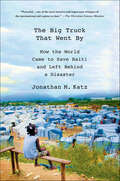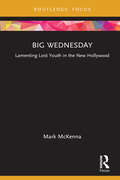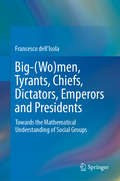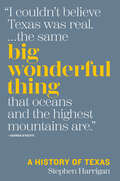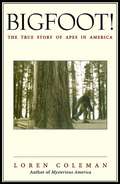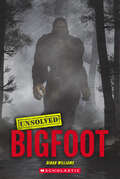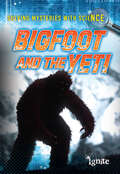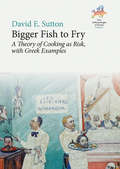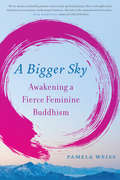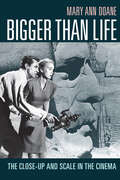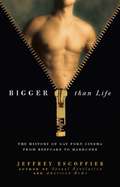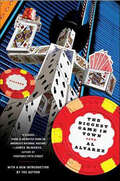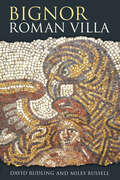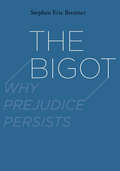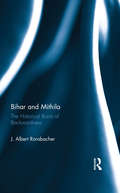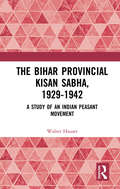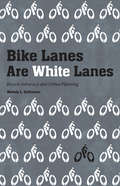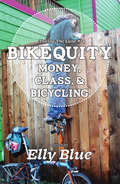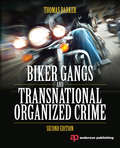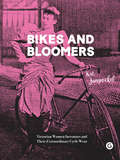- Table View
- List View
The Big Truck That Went By: How the World Came to Save Haiti and Left Behind a Disaster
by Jonathan M. KatzOn January 12, 2010, the deadliest earthquake in the history of the Western Hemisphere struck the nation least prepared to handle it. Jonathan M. Katz, the only full-time American news correspondent in Haiti, was inside his house when it buckled along with hundreds of thousands of others. In this visceral, authoritative first-hand account, Katz chronicles the terror of that day, the devastation visited on ordinary Haitians, and how the world reacted to a nation in need. More than half of American adults gave money for Haiti, part of a monumental response totaling $16.3 billion in pledges. But three years later the relief effort has foundered. It's most basic promises—to build safer housing for the homeless, alleviate severe poverty, and strengthen Haiti to face future disasters—remain unfulfilled.The Big Truck That Went By presents a sharp critique of international aid that defies today's conventional wisdom; that the way wealthy countries give aid makes poor countries seem irredeemably hopeless, while trapping millions in cycles of privation and catastrophe. Katz follows the money to uncover startling truths about how good intentions go wrong, and what can be done to make aid "smarter."With coverage of Bill Clinton, who came to help lead the reconstruction; movie-star aid worker Sean Penn; Wyclef Jean; Haiti's leaders and people alike, Katz weaves a complex, darkly funny, and unexpected portrait of one of the world's most fascinating countries. The Big Truck That Went By is not only a definitive account of Haiti's earthquake, but of the world we live in today.
Big Wednesday: Lamenting Lost Youth in the New Hollywood (Cinema and Youth Cultures)
by Mark McKennaThis book provides an examination of Big Wednesday as an unconventional film that employs a mythic sensibility in its representation of the loss of youth and young manhood.Critically and commercially unsuccessful on its original release, the coming-of-age, surf drama Big Wednesday (1978), has undergone a significant reappraisal. It is now considered not only an important contribution to youth cinema, but also the most important film that John Milius ever made. Over six chapters, the book considers questions of authorship, commerce, genre, stardom, and myth, and explores how these ideas intersect with the film’s status as a significant youth movie and collectively how these ideas have contributed to its recent critical rehabilitation. In doing so, the book also provides a much-needed reassessment of an important and overlooked entry in the New Hollywood canon.Exploring Big Wednesday’s subsequent resonance and relevance, this unique study will appeal to students and scholars in film studies, popular culture studies, youth studies, sociology, and media studies.
Big-(Wo)men, Tyrants, Chiefs, Dictators, Emperors and Presidents: Towards the Mathematical Understanding of Social Groups
by Francesco dell'IsolaThis book highlights mathematical ideas to help explain a number of important aspects of the dynamics of social groups. These ideas are similar to those used to describe the behaviour of Lagrangian mechanical systems, and as such this book appeals to anyone wanting to gain an understanding of the intrinsic unity of natural phenomena.
Big Wonderful Thing: A History of Texas (The Texas Bookshelf)
by Stephen HarriganFrom the New York Times-bestselling author, “as good a state history as has ever been written and a must-read for Texas aficionados.” —Kirkus Reviews (starred review)The story of Texas is the story of struggle and triumph in a land of extremes. It is a story of drought and flood, invasion and war, boom and bust, and the myriad peoples who, over centuries of conflict, gave rise to a place that has helped shape the identity of the United States and the destiny of the world. Big Wonderful Thing invites us to walk in the footsteps of these people along the path of Texas’s evolution. Blending action, atmosphere, and impeccable research, it brings to life the generations of driven men and women who shaped Texas, including Spanish explorers, American filibusters, Comanche warriors, wildcatters, Tejano activists, and spellbinding artists—all of them taking their part in the creation of a place that became not just a nation, not just a state, but an indelible idea—in an “exhilarating” book that dares to tell the whole glorious, gruesome, epically sprawling story of Texas (Kirkus Reviews).“What really sets Big Wonderful Thing apart is that it reads more like Lonesome Dove than it does something you might have been assigned in your seventh grade Texas history class.” ?Texas Monthly“Lavishly illustrated, fully annotated, brimming with sass, intelligence, trenchant analysis, literary acumen and juicy details, it is a page-turner . . . Popular history at its best.” ?The Wall Street Journal “Of particular interest is the attention Harrigan pays to marginalized groups; his writing on native peoples and African Americans in Texas is compelling.” ?Publishers Weekly, “The 10 Best Books About Texas”“Endlessly readable.” —NPR
Big Wonderful Thing: A History of Texas (The Texas Bookshelf)
by Stephen HarriganFrom the New York Times-bestselling author, “as good a state history as has ever been written and a must-read for Texas aficionados.” —Kirkus Reviews (starred review)The story of Texas is the story of struggle and triumph in a land of extremes. It is a story of drought and flood, invasion and war, boom and bust, and the myriad peoples who, over centuries of conflict, gave rise to a place that has helped shape the identity of the United States and the destiny of the world. Big Wonderful Thing invites us to walk in the footsteps of these people along the path of Texas’s evolution. Blending action, atmosphere, and impeccable research, it brings to life the generations of driven men and women who shaped Texas, including Spanish explorers, American filibusters, Comanche warriors, wildcatters, Tejano activists, and spellbinding artists—all of them taking their part in the creation of a place that became not just a nation, not just a state, but an indelible idea—in an “exhilarating” book that dares to tell the whole glorious, gruesome, epically sprawling story of Texas (Kirkus Reviews).“What really sets Big Wonderful Thing apart is that it reads more like Lonesome Dove than it does something you might have been assigned in your seventh grade Texas history class.” ?Texas Monthly“Lavishly illustrated, fully annotated, brimming with sass, intelligence, trenchant analysis, literary acumen and juicy details, it is a page-turner . . . Popular history at its best.” ?The Wall Street Journal “Of particular interest is the attention Harrigan pays to marginalized groups; his writing on native peoples and African Americans in Texas is compelling.” ?Publishers Weekly, “The 10 Best Books About Texas”“Endlessly readable.” —NPR
Bigfoot!: The True Story of Apes in America
by Loren ColemanFor years, scientists and researchers have studied, speculated about, and searched for an enigmatic creature that is legendary in the annals of American folklore. Now, learn the truth about... BIGFOOT! In this fascinating and comprehensive look at the fact, fiction, and fable of the North American "Sasquatch," award-winning author Loren Coleman takes readers on a journey into America's biggest mystery -- could an unrecognized "ape" be living in our midst? Drawing on over forty years of investigations, interviews, and fieldwork on these incredible beasts, Coleman explores the modern debates about these powerful, ape-like creatures, why they have remained a mystery for so long, and what we can learn about ourselves from these animals, our nearest cousins! From reports of Bigfoot's existence found in ancient Native American traditions, to the controversial Patterson-Gimlin film of a Bigfoot in the wild, to today's Internet sites that record the sightings almost as soon as they occur, Coleman uncovers the past, explains the present, and considers the future of one of the greatest unsolved mysteries in the natural world.
Bigfoot (Unsolved)
by Dinah WilliamsDiscover the unsolved mystery of Bigfoot in this beautifully illustrated book for kids, accessible for all readers!Bigfoot is a large, hairy, ape-like creature said to live in the forests of North America. Many people claim they have seen Bigfoot. Some of them have even presented evidence including videos and footprints. But is Bigfoot real or just a hoax? This real unsolved mystery will unfold with simple text and exciting visuals. Decide for yourself with actual clues, facts, and photographs.ABOUT THIS SERIES:Take a deep dive into some of the most unbelievable but real unsolved mysteries from history with this brand-new series of books. Can someone just disappear? Is there such a thing as a buried treasure? Does Bigfoot exist? Each book in this series focuses on one unsolved mystery and describes its main events chronologically. Readers will follow along as the exciting narrative uncovers real historical clues. Multiple theories will be presented providing an opportunity for readers to draw their own conclusions. The most up-to-date facts and relevant modern-day discoveries will be included to allow for real-world connections. Perhaps you will be the one to solve an unsolved mystery!
Bigger Fish to Fry: A Theory of Cooking as Risk, with Greek Examples (New Anthropologies of Europe: Perspectives and Provocations #3)
by David E. SuttonWhat defines cooking as cooking, and why does cooking matter to the understanding of society, cultural change and everyday life? This book explores these questions by proposing a new theory of the meaning of cooking as a willingness to put oneself and one’s meals at risk on a daily basis. Richly illustrated with examples from the author’s anthropology fieldwork in Greece, Bigger Fish to Fry proposes a new approach to the meaning of cooking and how the study of cooking can reshape our understanding of social processes more generally.
Bigger Fish to Fry: A Theory of Cooking as Risk, with Greek Examples (New Anthropologies of Europe: Perspectives and Provocations #3)
by David E. SuttonWhat defines cooking as cooking, and why does cooking matter to the understanding of society, cultural change and everyday life? This book explores these questions by proposing a new theory of the meaning of cooking as a willingness to put oneself and one’s meals at risk on a daily basis. Richly illustrated with examples from the author’s anthropology fieldwork in Greece, Bigger Fish to Fry proposes a new approach to the meaning of cooking and how the study of cooking can reshape our understanding of social processes more generally.
A Bigger Sky: Awakening a Fierce Feminine Buddhism
by Pamela WeissReimagining Buddhism through a feminine lens: A powerful memoir of healing, strength, and spiritual awakening.Written by the first and only layperson to receive full dharma transmission in the Suzuki Roshi Soto Zen lineage, A Bigger Sky explores what it means to traverse the gaps of a Buddhism created by and for men, navigate the seemingly contradictory domains of secular and spiritual life, and walk a path through the heart of the world. Blending memoir, Buddhist practice, and cultural observation, Weiss reorients Buddhism through a wider and more inclusive feminine lens. Her personal and spiritual journey speaks to the bits of brokenness in us all, shining a light on the different pathways we can walk to become whole. Through beautifully crafted prose, Weiss shares what it means to be an ordinary Bodhisattva, describing how the Buddha's profound vision of freedom can be lived outside of institutions and rule-bound practice to support us in deepening our connection with ourselves, each other, and the planet. A Bigger Sky illuminates how integrating a more feminine approach to Buddhist teachings can be applied in spiritual practice, community, relationships, and day-to-day life.
Bigger Than Life: The Close-Up and Scale in the Cinema
by Mary Ann DoaneIn Bigger Than Life Mary Ann Doane examines how the scalar operations of cinema, especially those of the close-up, disturb and reconfigure the spectator's sense of place, space, and orientation. Doane traces the history of scalar transformations from early cinema to the contemporary use of digital technology. In the early years of cinema, audiences regarded the monumental close-up, particularly of the face, as grotesque and often horrifying, even as it sought to expose a character's interiority through its magnification of detail and expression. Today, large-scale technologies such as IMAX and surround sound strive to dissolve the cinematic frame and invade the spectator's space, “immersing” them in image and sound. The notion of immersion, Doane contends, is symptomatic of a crisis of location in technologically mediated space and a reconceptualization of position, scale, and distance. In this way, cinematic scale and its modes of spatialization and despatialization have shaped the modern subject, interpolating them into the incessant expansion of commodification.
Bigger Than Life: The History of Gay Porn Cinema from Beefcake to Hardcore
by Jeffrey EscoffierHardcore porn?both the straight and gay varieties?entered mainstream American culture in the 1970s as the sexual revolution swept away many of the cultural inhibitions and legal restraints on explicit sexual expression. The first porn movie ever to be reviewed by "Variety," the entertainment industryOCOs leading trade journal, was Wakefield PooleOCOs "Boys in the Sand" (1971), a sexually-explicit gay movie shot on Fire Island with a budget of $4000. Moviegoers, celebrities and critics?both gay and straight?flocked to see "Boys in the Sand" when it opened in mainstream movie theaters in New York, Los Angeles and San Francisco. Within a year, "Deep Throat," a heterosexual hardcore feature opened to rave reviews and a huge box office?exceeding that of many mainstream Hollywood features. Almost all of those involved in making ?commercialOCO gay pornographic movies began as amateurs in a field that had virtually never existed before, either as art or commerce. Many of their ?undergroundOCO predecessors had repeatedly suffered arrest and other forms of legal harassment. There was no developed gay market and any films made commercially were shown in adult x-rated theaters. After the Stonewall riots and the emergence of the gay liberation movement in 1969, a number of entrepreneurs began to make gay adult movies for the new mail order market. The gay porn film industry grew dramatically during the next thirty years and transformed the way men?gay men in particular?conceived of masculinity and their sexuality. "Bigger Than Life" tells that story. "
Bigger than the Sky: Disabled Women on Parenting
by Michele Wates Rowen JadeIn this anthology the editors gather work by a variety of women with disabilities, united by the theme of parenting. Many contributors write enthusiastically about their parenting experiences; some explain their choice not to raise children; some write about meaningful relationships with children outside the traditional parent role. The authors represent disabilities including blindness, deafness, MS, post-polio, cerebral palsy, and cognitive and psychiatric disabilities.
The Biggest Game in Town
by Al Alvarez“The greatest dissection of high-stakes Vegas poker and the madness that surrounds it ever written.” —TimeOutAl Alvarez touched down in Las Vegas one hot day in 1981, a dedicated amateur poker player but a stranger to the town and its crazy ways. For three mesmerizing weeks he witnessed some of the monster high-stakes games that could only have happened in Vegas and talked to the extraordinary characters who dominated them—road gamblers and local professionals who won and lost fortunes on a regular basis.Set over the course of one tournament, The Biggest Game in Town is both the first chronicle of the World Series of Poker ever written and a portrait of the hustlers, madmen, and geniuses who ruled the high-stakes game in America. It is a brilliant insight into poker’s appeal as a hobby, an addiction, and a way of life, and into the skewed psychology of master players and fearless gamblers. With a new introduction by the author, Alvarez’s classic account is “probably the best book on poker ever written” (The Evening Standard).“A classic . . . There is no better book on America’s national pastime.” —James McManus, New York Times–bestselling author of Positively Fifth Street“Magnificent . . . Beyond the straights and full houses, Alvarez has written a book about people who are extremely good at what they do, and about America.” —San Francisco Chronicle“Conveys an understanding of gamblers and their milieu that can appeal to someone who has never seen a casino.” —Philadelphia Inquirer“Thoroughly entertaining . . . both perceptive and literate.” —The Washington Post
Biggest Secrets: More Uncensored Truth About All Sorts of Stuff You Are Never Supposed to Know
by William PoundstoneFrom the author of the mega-selling Big Secrets comes the equally entertaining sequel which unveils the truth about all sorts of things you are never supposed to know. The recipe for Mrs. Fields Cookies. . . What backward messages on records are really trying to tell you. . . Frank Sinatra's real age. . . Why you can't counterfeit a lottery ticket. . . Barbra Streisand's blue movie. . . The other Boy Scout rituals. . . Ingmar Bergman's soap commercials. . . The formula for Play-Doh. . . and more.
Bignor Roman Villa
by Miles Russell David RudlingDiscovered in 1811, Bignor is one of the richest and most impressive villas in Britain, its mosaics ranking among the finest in north-western Europe. Opened to the public for the first time in 1814, the site also represents one of Britain’s earliest tourist attractions, remaining in the hands of the same family, the Tuppers, to this day. This book sets out to explain the villa, who built it, when, how it would have been used and what it meant within the context of the Roman province of Britannia. It also sets out to interpret the remains, as they appear today, explaining in detail the meaning of the fine mosaic pavements and describing how the villa was first found and explored and the conservation problems facing the site in the twenty-first century. Now, after 200 years, the remarkable story of Bignor Roman Villa is told in full in this beautifully illustrated book.
The Bigot
by Stephen Eric BronnerStephen Eric Bronner is a prolific author, activist, and one of America's leading political thinkers. His new book presents bigotry as a systematic, all-encompassing mindset that has a special affinity for right-wing movements. In what will surely prove a seminal study, Bronner explores its appeal, the self-image it justifies, the interests it serves, and its complex connection with modernity. He reveals how prejudice shapes the conspiratorial and paranoid worldview of the true believer, the elitist, and the chauvinist. In the process, it becomes apparent how the bigot hides behind mainstream conservative labels in order to support policies designed to disadvantage the targets of his contempt. Examining bigotry in its various dimensions--anthropological, historical, psychological, sociological, and political--Professor Bronner illustrates how the bigot's intense hatred of "the other" is a direct reaction to social progress, liberal values, secularism, and an increasingly complex and diverse world. A sobering look at the bigot in the twenty-first century, this volume is essential for making sense of the dangers facing democracy now and in the future.
Bihar and Mithila: The Historical Roots of Backwardness
by J. Albert RorabacherThe world has become obsessed with the Western notions of progress, development, and globalization, the latter a form of human and economic homogenization. These processes, through the aegis of the United Nations, are comparatively monitored. Those nations deemed to be ‘lagging behind’ are then provided with foreign aid and developmental assistance. For nearly seventy years, India has sought its place in this global endeavour; yet, even today, abject poverty and backwardness can be observed in districts in almost every state; with the highest concentration of such districts found in the state of Bihar and a cultural enclave, known as Mithila. Development in India has been elusive because it is difficult to define; and because the Western concepts of development and progress have no absolute equivalents within many non-Western settings. As a consequence, development programmes often fail because they are unable to ask the right questions, but equally important is the political economy derived from foreign aid. For politicians, there is no long-term benefit to be derived from successful development. In general, foreign aid only serves to corrupt governments and politicians and, in the end, does very little for those who need help. The struggling states of Bihar and Mithila serve as extreme examples of India‘s problems. Development here has been thwarted by a hereditary landed aristocracy supported by religion, casteism, custom, social stratification, tradition, and patterns of behaviour that can be traced back millennia. In turn, all these have been masterfully manipulated by co-opted politicians, who have turned politics into a veritable art form as this volume comprehensively demonstrates.
The Bihar Provincial Kisan Sabha, 1929-1942: A Study of an Indian Peasant Movement
by Walter HauserOn December 5th, 1920, in Patna, the Dasnami sannyasi Sahajanand Saraswati encountered Mahatma Gandhi for the first time. Sahajanand was already known in social-reform circles in Bihar as an energetic activist and educator working to promote Bhumihar Brahman identity. Inspired by the Mahatma’s radical reformulation of Indian nationalism, ‘the Swami’ (as Sahajanand would soon come to be known) threw himself into nationalist politics and the Indian National Congress. Within a decade, moved by the plight of tenant-farmers struggling against excessive rent demands and abusive landlord ‘exactions’, the Swami had spearheaded the formation of the Bihar Provincial Kisan Sabha. This organization quickly became the largest organization of its kind in India, catapulting the Swami onto the national stage. By the early mid-1930s the Swami had publicly broken with both the Mahatma and the ‘Gandhians’ and had made common cause with the left wing of the Congress. Later, as the storm clouds of World War II gathered on the horizon, he joined forces with the Forward Bloc and the Communist Party of India. By the time of his death in 1950, the Swami, disillusioned with politics, had dissociated himself from all parties.This pioneering 1961 study by Walter Hauser, tracks the history of the Bihar peasant movement as it both influenced and was buffeted by national and international politics. Hauser offers here a penetrating analysis of the character of the movement and the mind of its leader as he grappled with and gravitated toward Marxism-Leninism in the 1930s and 1940s. Initially written as a Ph.D. dissertation at the University of Chicago, Hauser’s path-breaking Bihar Provincial Kisan Sabha, 1929-1942 is now being published in its entirety for the first time. The volume includes a ‘Foreword’ by one of Hauser’s many students, William R. Pinch. Please note: Taylor & Francis does not sell or distribute the Hardback in India, Pakistan, Nepal, Bhutan, Bangladesh and Sri Lanka
Bike Lanes Are White Lanes: Bicycle Advocacy and Urban Planning
by Melody L HoffmannThe number of bicyclists is increasing in the United States, especially among the working class and people of color. In contrast to the demographics of bicyclists in the United States, advocacy for bicycling has focused mainly on the interests of white upwardly mobile bicyclists, leading to neighborhood conflicts and accusations of racist planning. In Bike Lanes Are White Lanes, scholar Melody L. Hoffmann argues that the bicycle has varied cultural meaning as a “rolling signifier.” That is, the bicycle’s meaning changes in different spaces, with different people, and in different cultures. The rolling signification of the bicycle contributes to building community, influences gentrifying urban planning, and upholds systemic race and class barriers. In this study of three prominent U.S. cities—Milwaukee, Portland, and Minneapolis—Hoffmann examines how the burgeoning popularity of urban bicycling is trailed by systemic issues of racism, classism, and displacement. From a pro-cycling perspective, Bike Lanes Are White Lanes highlights many problematic aspects of urban bicycling culture and its advocacy as well as positive examples of people trying earnestly to bring their community together through bicycling.
Bikequity: Money, Class, & Bicycling
by UnknownBicycling has the radical potential of equalizing our transportation system, creating more equitable opportunities from the personal to the societal, and being a vehicle for protest and social justice. But that isn't how it always works. The contributors to this volume of Taking the Lane zine tackle of the potentials and realities and unintended consequences of trying to create a better world using human-powered transportation.Edited by Elly Blue and featuring work by Tamika Butler, Adonia Lugo, Do Jun Lee, Gretchin Lair, V.K. Henry, Lauren Hage, Tammy Melody Gomez, Phill Melton, Cat Caperello, Joe Biel, Julie Brooks, Kassandra Karaitis, Katura Reynolds, Rebecca Fish Ewan, Rhienna Renée Guedry, and Adrian Lipscombe. This is the 14th issue of Taking the Lane feminist bike zine.
Biker Gangs and Transnational Organized Crime
by Thomas BarkerBiker Gangs and Transnational Organized Crime, Second Edition, describes and analyzes a rapidly expanding global problem: criminal acts committed by motorcycle gangs. Thomas Barker, one of the world’s top experts on outlaw biker gangs, offers fascinating details about the Bandidos, the Vagos, the Mongols, and other "one percenters" (criminal biker gangs, as opposed to the vast majority of motorcycle enthusiasts). He combines this data with a strengthened conceptual framework that makes sense of this complicated picture. U.S.-based motorcycle gangs like the Hells Angels have proliferated, especially in Canada and Europe, to the point where these gangs have more members in other countries than in the United States. Increasingly more often in recent years their crimes are not limited to rumbles or drug use—these gangs challenge the dominance of organized crime, leading to violent conflicts between the rivals. Germany, Scandinavia, the UK, the Netherlands, and Canada are particularly hard-hit by this rising violence. One of Barker’s unique contributions is his Criminal Organization Continuum, building on the groundbreaking network approach to organized crime proposed by Klaus von Lampe. Introduced in the first edition, Barker elaborates his continuum tool and makes it more multi-dimensional to help refine the definition of adult criminal gangs. The product of years of research, this book lays the groundwork for further study by offering students, police, and researchers the most thorough account available of outlaw motorcycle gangs.
Bikes and Bloomers: Victorian Women Inventors and their Extraordinary Cycle Wear (Goldsmiths Press Ser.)
by Kat JungnickelAn illustrated history of the evolution of British women's cycle wear.The bicycle in Victorian Britain is often celebrated as a vehicle of women's liberation. Less noted is another critical technology with which women forged new and mobile public lives—cycle wear. This illustrated account of women's cycle wear from Goldsmiths Press brings together Victorian engineering and radical feminist invention to supply a missing chapter in the history of feminism.Despite its benefits, cycling was a material and ideological minefield for women. Conventional fashions were unworkable, with skirts catching in wheels and tangling in pedals. Yet wearing “rational” cycle wear could provoke verbal and sometimes physical abuse from those threatened by newly mobile women. Seeking a solution, pioneering women not only imagined, made, and wore radical new forms of cycle wear but also patented their inventive designs. The most remarkable of these were convertible costumes that enabled wearers to transform ordinary clothing into cycle wear.Drawing on in-depth archival research and inventive practice, Kat Jungnickel brings to life in rich detail the little-known stories of six inventors of the 1890s. Alice Bygrave, a dressmaker of Brixton, registered four patents for a skirt with a dual pulley system built into its seams. Julia Gill, a court dressmaker of Haverstock Hill, patented a skirt that drew material up the waist using a mechanism of rings or eyelets. Mary and Sarah Pease, sisters from York, patented a skirt that could be quickly converted into a fashionable high-collar cape. Henrietta Müller, a women's rights activist of Maidenhead, patented a three-part cycling suit with a concealed system of loops and buttons to elevate the skirt. And Mary Ann Ward, a gentlewoman of Bristol, patented the “Hyde Park Safety Skirt,” which gathered fabric at intervals using a series of side buttons on the skirt. Their unique contributions to cycling's past continue to shape urban life for contemporary mobile women.
Bikini-Ready Moms: Celebrity Profiles, Motherhood, and the Body (SUNY series in Feminist Criticism and Theory)
by Lynn O'Brien HallsteinWinner of the 2016 Outstanding Book Award presented by the Organization for the Study of Communication, Language, and Gender (OSCLG)The requirements of "good" motherhood used to primarily involve the care of children, but now contemporary mothers are also pressured to become bikini-ready immediately postpartum. Lynn O'Brien Hallstein analyzes celebrity mom profiles to determine the various ways that they encourage all mothers to engage in body work as the energizing solution to solve any work-life balance struggles they might experience. Bikini-Ready Moms also considers the ways that maternal body work erases any evidence of mothers' contributions both at home and in professional contexts. O'Brien Hallstein theorizes possible ways to fuel a necessary mothers' revolution, while also pointing to initial strategies of resistance.
